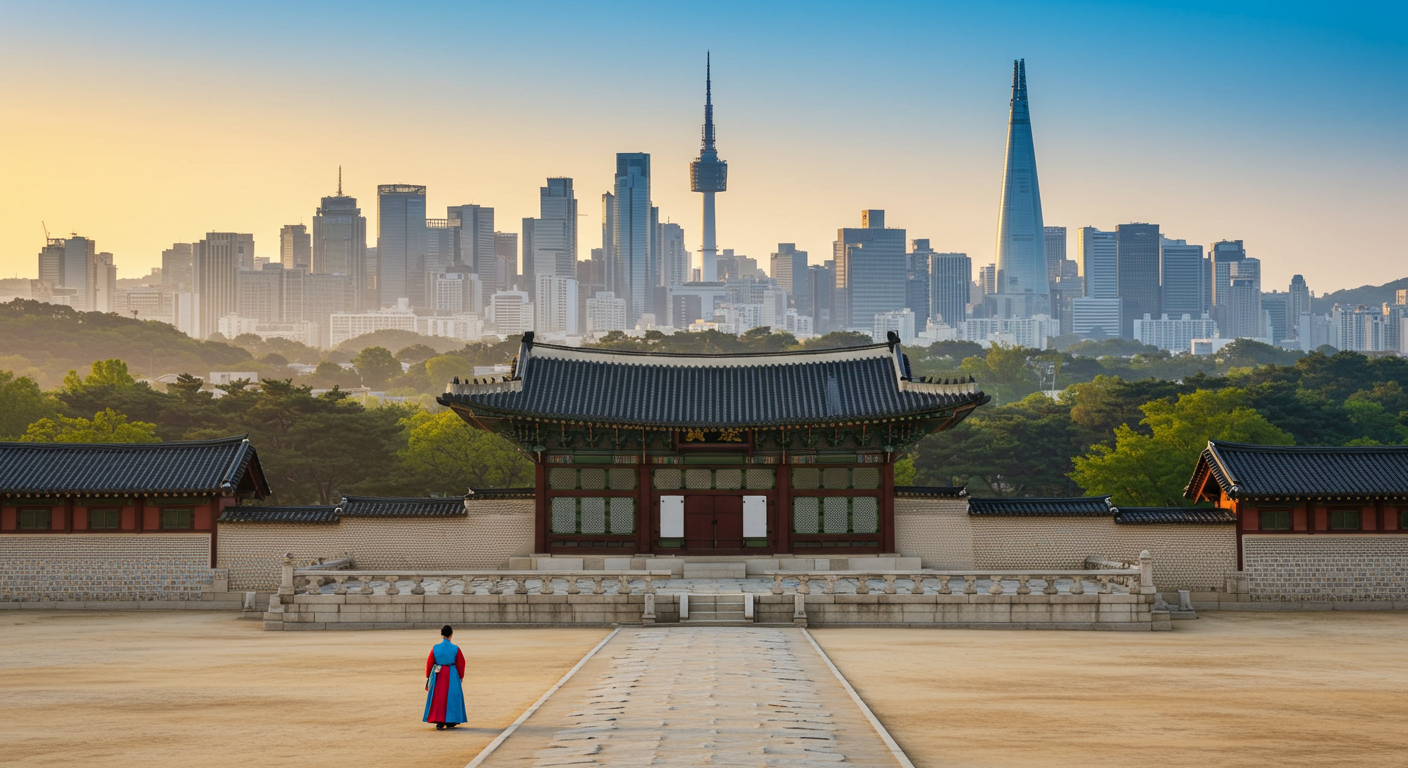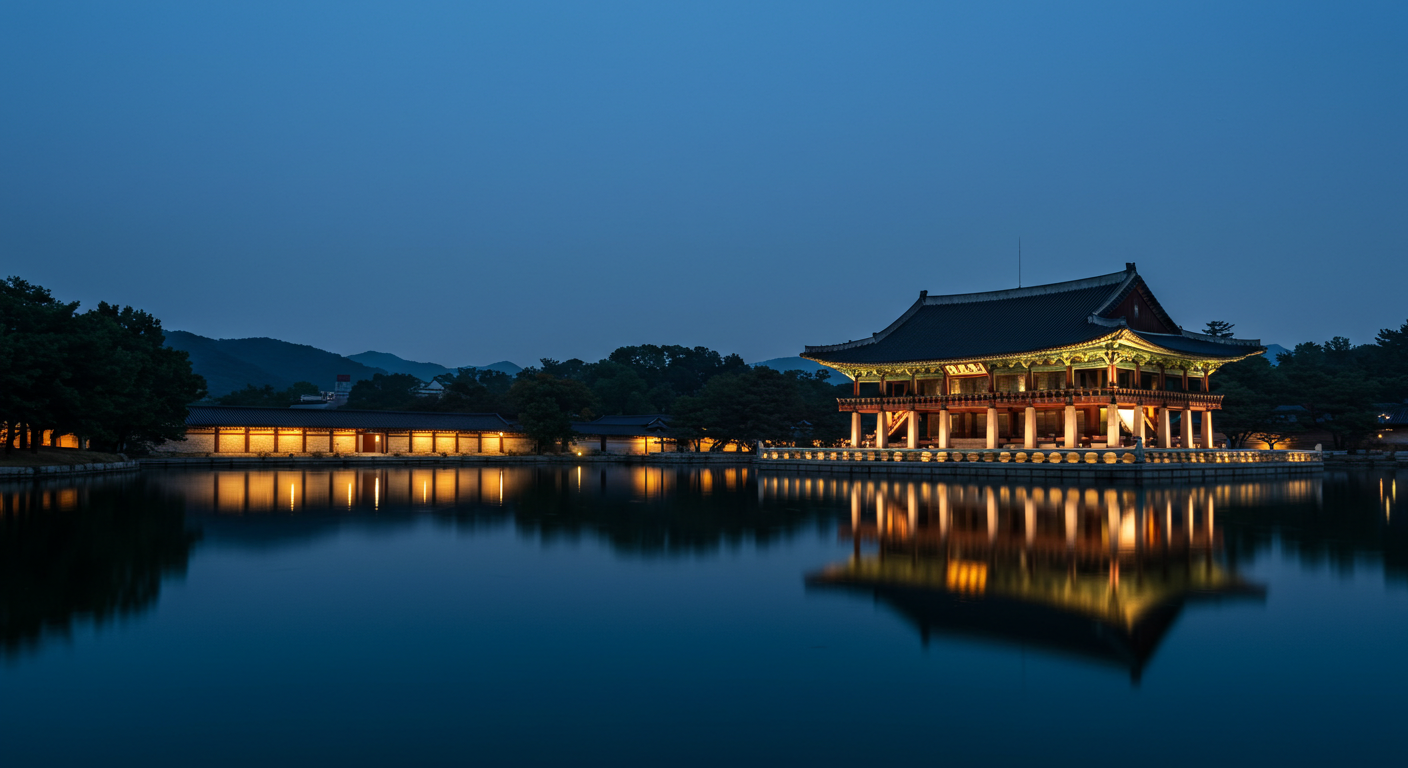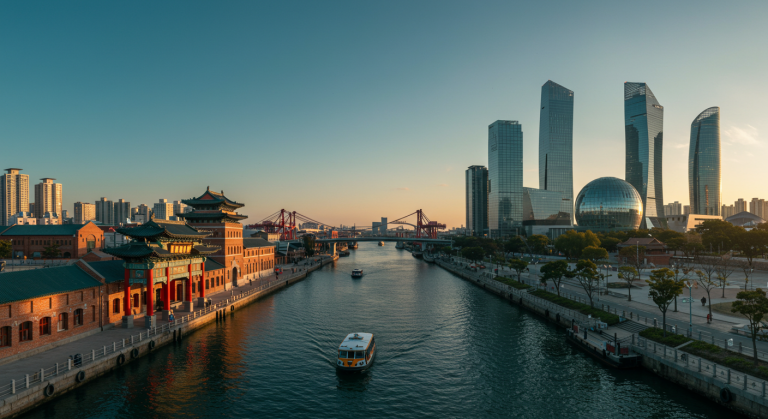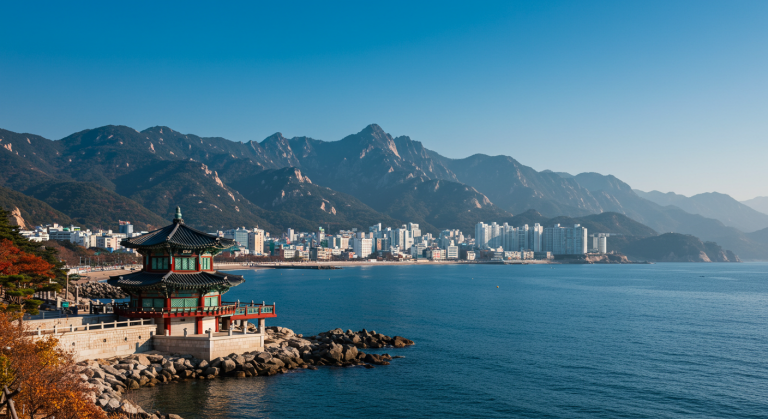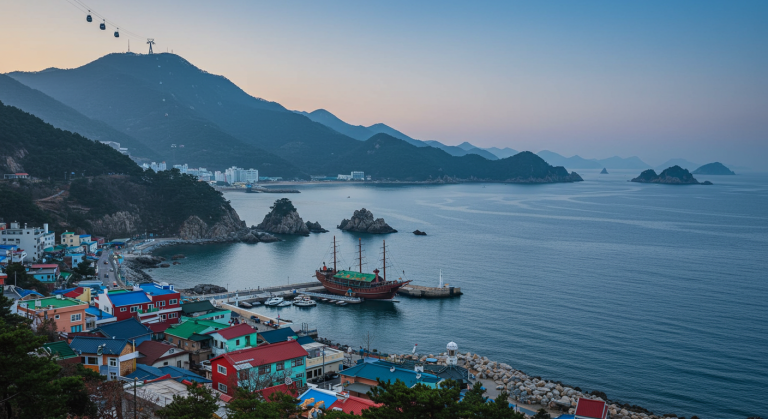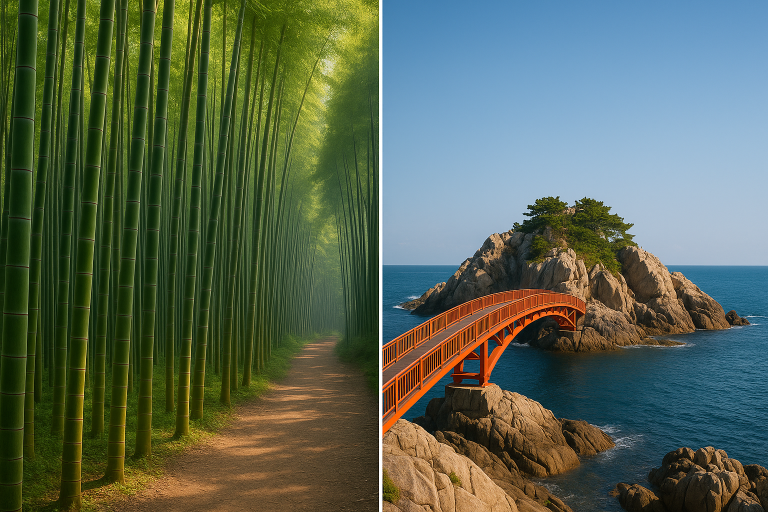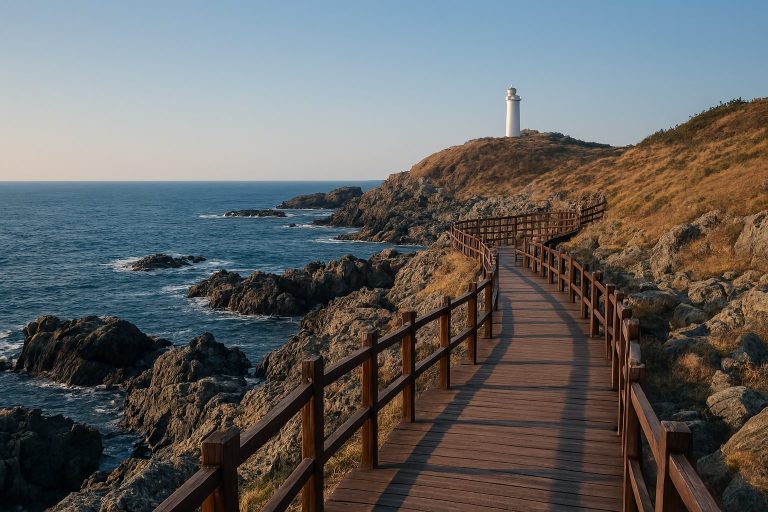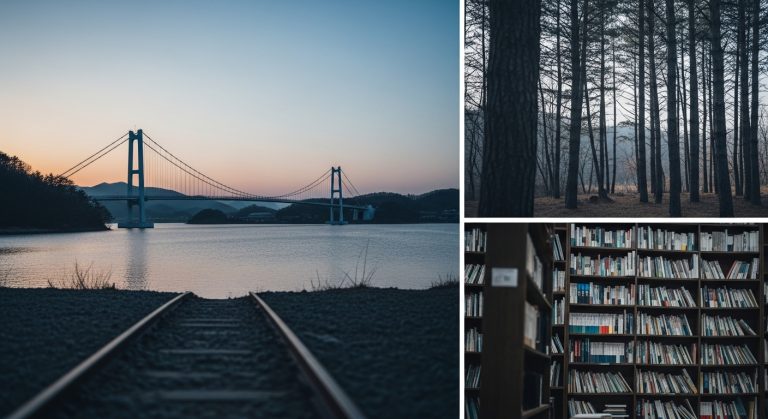Gyeongju Travel Guide: How to Master the UNESCO Sites and Nightscapes in South Korea’s Ancient Capital
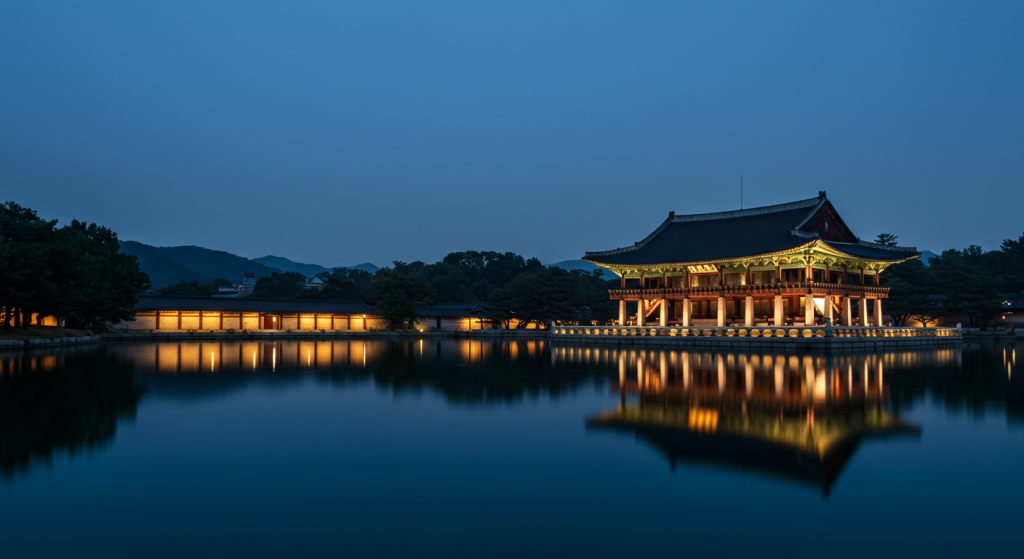
Have you ever felt overwhelmed trying to choose a travel destination where you can truly connect with history, but still enjoy the modern comforts of a vacation?
Trust me, I have been there! Gyeongju, South Korea’s ancient capital, often feels like a giant, open-air museum, and it can be hard to know where to start exploring over a thousand years of history in just a few days.
This is why I put together this exhaustive guide. My goal is to break down the most essential and breathtaking Gyeongju travel destinations into manageable sections, covering everything from the spiritual serenity of its temples to the vibrant energy of its modern streets.
By the end of this article, you will feel completely ready to embark on your own epic journey to the land of the Silla Kingdom. Let’s start uncovering this timeless city together! 🗺️😊
1. Sacred Monuments: Bulguksa, Seokguram, and the Essence of Buddhist Art 🏯
When planning your Gyeongju itinerary, the first stop should undoubtedly be the dual UNESCO World Heritage sites: **Bulguksa Temple** and the **Seokguram Grotto**. These two sites represent the pinnacle of Silla Buddhist art and architecture, a testament to a golden age.
They are often visited together due to their proximity, perched on the slopes of Mount Toham, offering not just historical insight but also stunning natural scenery.
Bulguksa Temple: The Land of the Buddha
Bulguksa is more than just a temple; it’s a physical manifestation of the Buddhist ideal world. It was originally built in the 8th century, and the intricate stone staircases, Cheongungyo (Blue Cloud Bridge) and Baegungyo (White Cloud Bridge), symbolize the path from the secular world to the spiritual one.
Take your time to admire the precision of the stone craftsmanship, especially the multi-story **Dabotap (Many Treasures Pagoda)** and the simpler **Seokgatap (Sakyamuni Pagoda)** in the main courtyard.
Bulguksa can get very crowded, especially on weekends. Aim to arrive right when it opens (usually 7:30 AM) to experience the temple in quiet contemplation and get the best photos before the tour buses arrive.
Seokguram Grotto: The Masterpiece of Silla Sculpture
A short bus or car ride up Mount Toham from Bulguksa is the Seokguram Grotto, home to one of the most sublime Buddhist statues in the world. The serene main Buddha figure, facing the East Sea, is renowned for its architectural and mathematical perfection.
While you can only view the statue from a distance through a glass partition now, the sheer artistry and the spiritual atmosphere of the grotto are palpable. It truly embodies the artistic and religious ambition of the Silla period.
The road up to Seokguram is winding, and there’s a short walk from the parking lot. If you are taking public transport, be aware that the bus route (Bus 12) between Bulguksa and Seokguram has less frequent service in the off-season. Check the schedule *before* you start your day!
To help you compare the two iconic sites, I’ve put together a quick comparison table:
| Site | Focus | Best For | Travel Note |
|---|---|---|---|
| Bulguksa Temple | Architectural Layout, Pagodas | Photography, Large Scale History | Easy access by city bus (Bus 10/11). |
| Seokguram Grotto | Sculptural Art, Spiritual Depth | Meditation, Sunrise Viewing (from afar) | Requires separate bus (Bus 12) or taxi from Bulguksa. |
2. The Royal Tombs and Ancient Urban Cores: Daereungwon & Wolseong 👑
Right in the heart of Gyeongju city, you’ll find colossal, grass-covered mounds that look like gentle hills, but are actually the burial sites of Silla royalty. This central area is the most walkable and concentrated historical zone in the city.
Walking among these grand tombs offers a unique sense of scale and the deep, rich history of the area. It makes you feel incredibly small in the face of such a long history.
Daereungwon Tomb Complex and Cheonmachong
The Daereungwon complex is home to **23 large royal tombs**. The most famous of these is the **Cheonmachong Tomb**, which is the only one you can enter and explore inside.
It was here that the famous painting of the Heavenly Horse (Cheonma) was discovered, along with thousands of other priceless artifacts, including the iconic Silla gold crown. Visiting the interior gives you a fascinating look at the burial structure and the relics found there.
The Moon Fortress (Wolseong) and Cheomseongdae
Just a short walk from the tomb park are the remains of the **Wolseong (Moon Fortress)**, the former palace site of the Silla Kings. While the fortress walls are mostly overgrown earthworks today, the area is serene and leads to another absolute Gyeongju landmark: **Cheomseongdae Observatory**.
Cheomseongdae is Asia’s oldest surviving astronomical observatory, built from stacked stone bottles. It’s a marvel of Silla science and mathematics, a perfect symbol of their advanced culture.
3. The Nightscape Magic: Donggung Palace, Wolji Pond, and the Illuminated History ✨
Gyeongju at night transforms into an ethereal wonderland, unlike any other city. The strategic illumination of key sites creates a deeply romantic and photogenic atmosphere.
If you only have one night in the city, there is one place that is absolutely non-negotiable for a visit, and that is Donggung Palace and Wolji Pond.
Donggung Palace and Wolji Pond: A Reflected History
**Wolji Pond** was originally part of the auxiliary palace grounds of the Silla Crown Prince (**Donggung**). This artificial pond, built in 674 AD, was designed to resemble the sea, complete with miniature islands and meticulously planted trees.
The magic happens after sunset. When the ancient pavilions and surrounding trees are lit up, their brilliant reflections on the perfectly still water of the pond create a scene of breathtaking beauty. It’s truly a moment where you can feel transported back in time.
For the best reflection photos at Wolji, try visiting right after twilight (about 30 minutes after sunset). Use a tripod or stabilize your camera to capture the smooth water and the crisp light reflections. Expect lines to enter and exit during peak season!
Other Illuminated Wonders: Woljeonggyo Bridge
The newly restored **Woljeonggyo Bridge** is another stunning nightscape attraction. This traditional wooden bridge over the Muncheon Stream was recently reconstructed based on historical records and offers an incredible view.
The vibrant colors of the illuminated structure against the dark sky make it a fantastic, less-crowded alternative or addition to your night tour after leaving Wolji Pond. It’s easily reachable on foot from the Wolseong area, completing a lovely night walk.
4. Modern Charm Meets Heritage: Hwangnidan-gil and Local Flavors ☕
Gyeongju isn’t just about ancient history; it also boasts a vibrant contemporary scene, especially in the area known as **Hwangnidan-gil**. This neighborhood, located near the Daereungwon Tombs, has exploded in popularity, blending modern cafe culture with traditional Korean architecture.
The buildings here maintain the *hanok* (traditional house) style, but their interiors house stylish cafes, boutique shops, trendy restaurants, and photo zones. It’s the perfect spot to take a break from museum hopping and enjoy a delicious cup of coffee.
The Hwangnidan-gil Experience: Must-Try Activities
- **Hanbok Rental:** Renting a traditional Korean dress is immensely popular here. Walking through the historical streets in a *hanbok* offers a fantastic photo opportunity.
- **Traditional Sweets:** Don’t miss trying Gyeongju’s famous traditional bread, **Gyeongju Hwangnam Bread (Hwangnam-ppang)**, a small cake filled with sweet red bean paste. They make excellent souvenirs.
- **Artisan Shopping:** Look for unique, locally-made crafts and souvenirs that often feature Silla motifs like the gold crown or the Heavenly Horse.
Beyond the trendy cafes, Gyeongju’s local cuisine offers a true taste of the region. Be sure to try **Sanchae Bibimbap**, a mixed rice dish featuring mountain vegetables often served near the temple areas, or sample some **Heotjesabap**, a local version of Bibimbap traditionally served to scholars.
Hwangnidan-gil Vibe Check ☕
Best Time to Visit
Late Afternoon (4 PM – 7 PM). Transition from cafe hopping to evening dinner/drinks.
Average Coffee Price
KRW 5,000 to KRW 8,000 (Slightly higher than average due to unique *hanok* atmosphere).
5. Planning Your Epic Journey: Practical Tips and Itineraries 📝
Now that you know the best spots, let’s talk logistics. Gyeongju is an extremely tourist-friendly city, but because the historical sites are spread out, having a solid plan is crucial to maximizing your time and avoiding unnecessary travel.
One of the biggest mistakes travelers make is underestimating the distance between the city center (Daereungwon) and the mountain/lake areas (Bulguksa, Bomun Lake). You’ll need to rely on the local bus system, taxis, or rental cars.
Transportation Strategies
- **City Bus System:** This is the most cost-effective method. Key routes (especially **Bus 10** and **Bus 11**) circle the main attractions like the Bus Terminal, Daereungwon, and Bulguksa. They run frequently.
- **Taxis:** Taxis are readily available in the city center and are the fastest way to get to further-flung spots like Seokguram or Bomun Lake. They are affordable, especially when traveling in a group of two or more.
- **Bike Rentals:** For the central area (Daereungwon, Cheomseongdae, Wolseong), renting a bike is a fantastic way to cover ground and enjoy the scenery. Many rental shops can be found near the main historical park.
Gyeongju uses standard Korean transportation cards (**T-money** or **Cashbee**). You absolutely must have a charged card or exact cash (coins/bills) ready, as the bus drivers do not carry change. Purchasing a card at a convenience store upon arrival is highly recommended.
Gyeongju Must-See Checklist (Interactive) ✅
6. Conclusion: Your Timeless Gyeongju Adventure Awaits 🚀
Gyeongju, with its gentle hills, towering royal tombs, and the soft echo of a thousand-year-old kingdom, offers a truly unique travel experience. It’s a city that allows you to effortlessly bridge the gap between ancient history and modern life.
We’ve covered the spiritual heights of Bulguksa, the silent grandeur of Daereungwon, the reflective magic of Wolji Pond, and the buzzing charm of Hwangnidan-gil. All of these destinations contribute to Gyeongju’s title as a “Museum Without Walls.”
Key Takeaways for Your Gyeongju Trip
- ➡️ **Divide & Conquer:** Group your visits into three zones: Temple (Bulguksa/Seokguram), Central (Tombs/Cheomseongdae/Hwangnidan-gil), and Lake (Bomun).
- ➡️ **Prioritize Night:** Book your Wolji Pond visit for the evening; it is the most spectacular view you will get.
- ➡️ **Get Mobile:** Rely on the efficient local bus system (Bus 10/11) and consider a bike rental for the flatter central park area.
Remember to slow down, breathe in the history, and look closely at the details—from the cornerstones of the pagodas to the reflection in the pond. This isn’t just a trip; it’s a journey into the soul of Korean heritage.
Have you been to Gyeongju before, or are you planning your first visit? Let me know your favorite historical spot or which attraction you’re most excited to see in the comments below! Safe travels! 💖
